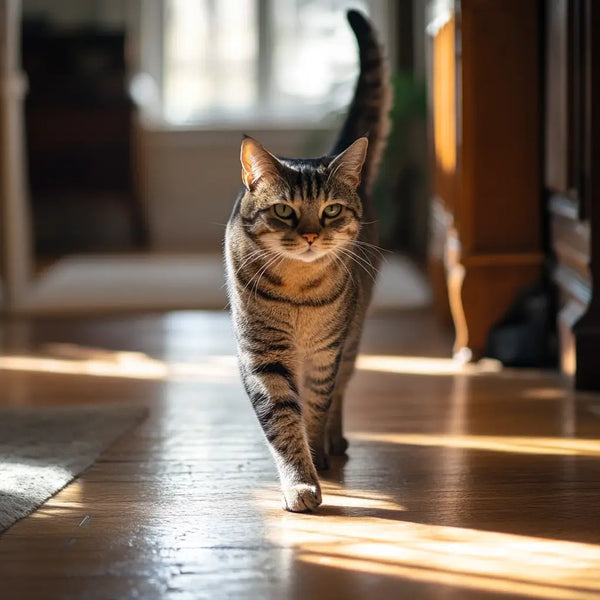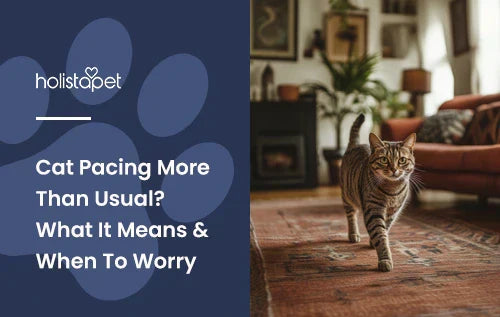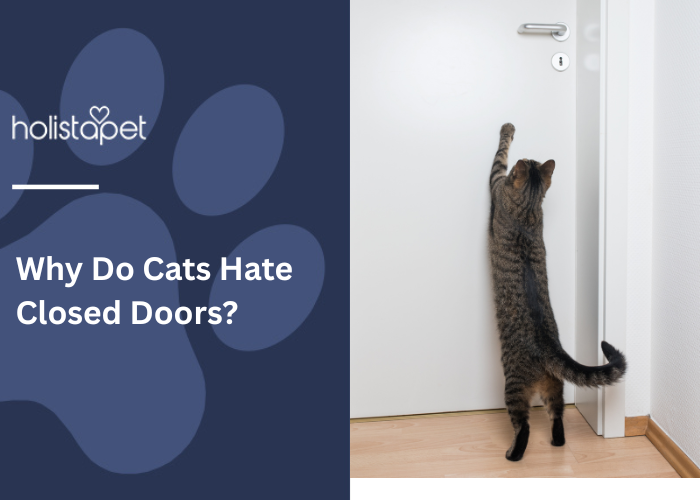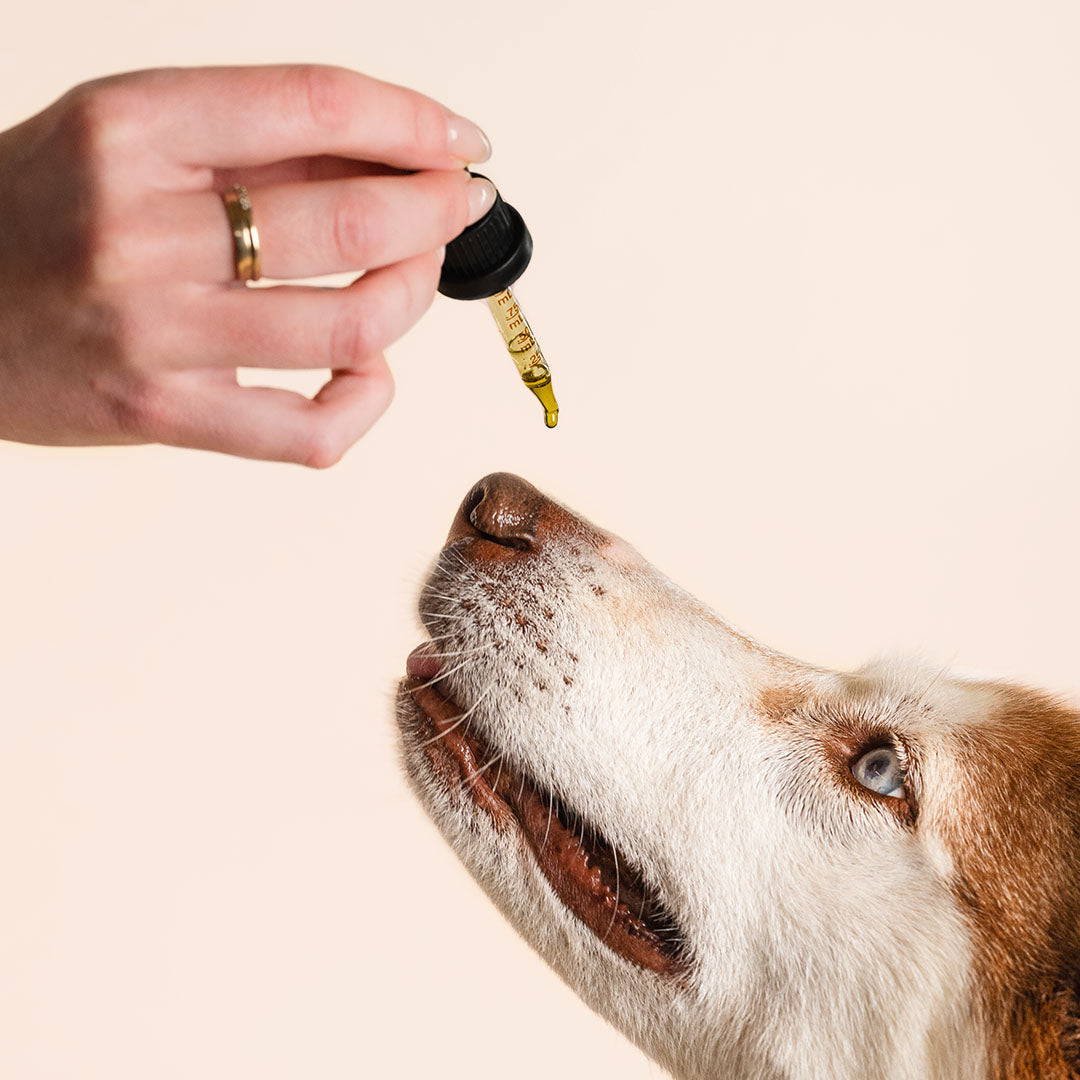Ever catch your cat pacing back and forth like they’re waiting for something important? Cat pacing is more common than you think, and it can mean all sorts of things. Sometimes it’s harmless. Other times, it might signal something bigger.
Is your kitty just bored, or are they trying to tell you something? Maybe they’re hungry, anxious, or not feeling their best. Cats can’t talk, so they show us how they feel with their actions.
Curious? Stick around to find out what your cat’s paws and tail are really saying, and when it’s time to consider an issue or call the vet.
What Is Cat Pacing?

Cat pacing means your cat walks back and forth in a pattern around the house. It may seem like they’re on a mission, but pacing can point to boredom, nervousness, or even a medical condition.
Some older cats pace because of cognitive dysfunction. Others do it when dealing with stress or anxiety. The key is knowing what’s normal for your cat.
Defining Pacing in Cats – What It Looks Like
When a cat is pacing, you’ll notice them walking the same path again and again. Some may circle litter boxes, wander from room to room, or trail their family members. It’s not just stretching their legs. This behavior can show anxious feelings or behavior changes. Pet parents often notice this first thing in the morning or during the night when the house is quiet.
Normal vs. Concerning Pacing Behavior
Some cats pace when they want food or play. That’s totally normal. But if pacing comes with weight loss, excessive vocalization, or sudden behavioral problems, it could be more serious. Senior cats with feline dementia or thyroid disease may also start pacing often.
Watch for other symptoms like less sleep, hearing loss, or ignoring other pets. That’s when a vet visit might be a smart move.
Why Is My Cat Pacing?
Cat pacing happens for lots of reasons. Some cats do it when they feel bored or anxious. Others might show it when dealing with a medical condition or age-related issues like cognitive dysfunction. If your cat is pacing more often, it’s time to watch their habits. Pay attention to behavior changes, especially in older cats and senior cats.
Attention-Seeking or Boredom
Most cats love routine, but when things get dull, they act out. Pacing is one way your cat may try to get noticed. They might be asking for playtime, food, or some good old-fashioned attention from pet parents. Young cats and even neutered ones often pace when they don’t get enough stimulation around the house. Adding toys or more play sessions can help curb this behavior.
Discomfort, Pain, or Medical Causes
Some cats pace when they’re dealing with discomfort or a medical problem. Watch for these signs:
- Excessive vocalization
- Weight loss or less eating
- Time grooming one area too much
- A head tilt, strange walk, or stumbling
- Hearing loss or less response to sounds
Elderly cat pacing may point to feline dementia, cognitive decline, or an overactive thyroid. A vet visit can help rule out serious health conditions like high blood pressure or thyroid disease.
Environmental Stress or Anxiety Triggers
A move to a new house, changes in routine, or loud noises can spark stress or anxiety in even the most chill cats. Anxious pacing may pop up after adding other pets, losing a companion, or even a new baby joining the family. Pet care routines like regular play and safe spaces can help reduce stress and calm your cat's behavior.
Cat Pacing and Meowing – What It Could Mean

When your cat is pacing and meowing, they’re trying to tell you something. It could be boredom, hunger, or anxious energy. Some older cats show this behavior at night. In some cases, it may hint at feline dementia or stress.
Nighttime Pacing and Vocalization
Pacing at night with constant meowing can wear down your sleep and your nerves. Senior cats or elderly cats pacing often ramps up after dark due to cognitive dysfunction or confusion. Some may vocalize excessively if they can't find their family members or feel lost. This is a common sign of cognitive decline in aging pets and should be watched closely.
Meowing for Food, Attention, or Reassurance
If your cat is pacing and meowing during the day, they may just want something simple. Check for:
- Empty litter boxes
- Empty food bowls
- A change in routine or pet care
- Lack of interaction with other pets
- Less playtime around the house
Pet parents should keep track of when this behavior starts. It can help uncover the underlying cause and bring peace back to the house.
Medical Reasons Behind Cat Pacing
Sometimes, cat pacing has nothing to do with boredom or behavior. It can come from an underlying cause linked to health conditions. These issues might show up slowly or come on fast.
Here’s what could be going on inside your cat’s body when they start walking in circles with no clear reason.
Cognitive Dysfunction in Senior Cats
Senior cats or older cats may show signs of cognitive dysfunction as they age. This often includes pacing, confusion, and acting lost in familiar spaces. Some may even forget where the litter boxes are or act restless at night. These changes in a cat's behavior can make simple things harder for them. A vet visit can help confirm the cause.
Thyroid Imbalance or Hormonal Issues
An overactive thyroid is one reason a cat is pacing, especially in older cats. This medical condition can lead to weight loss, pacing, and being extra vocal. Thyroid disease also messes with a cat's metabolism, making them act more jumpy or restless. Veterinary care and blood tests are needed to check hormone levels and plan treatment.
Urinary Tract Issues or Internal Discomfort
If your cat paces and cries near the litter boxes, it could be due to discomfort inside. Bladder or kidney issues can cause pacing and licking or straining when they try to go. Keep an eye out for signs like less sleep, more trips to the box, or avoiding it altogether. These health issues need quick veterinary attention.
Sensory Decline
Cats with hearing loss or fading vision may seem confused. They might start pacing more because their world feels unfamiliar. You may also notice them ignore family members or vocalize excessively when they feel lost. Pet parents should give gentle support and try to keep furniture and routines consistent to help the cat feel safe.
Toxin Exposure
Some cats pace after licking or eating something they shouldn't. Cleaning products, houseplants, or even human food can trigger reactions. Signs include confusion, twitching, or nonstop walking. If your cat suddenly acts off after being in a new room or around the house, it’s time for a vet visit right away. They may need to run blood tests.
Parasites or Skin Irritation
Fleas, mites, or skin irritation can make your cat move constantly. You might see more scratching, biting, or pacing. They may spend more time grooming or rubbing against furniture. These signs often get worse at night. A quick check by a veterinarian can spot the issue early and prevent more scratching or pacing from happening.
Behavioral Triggers of Cat Pacing

Not all pacing comes from medical problems. Sometimes your cat’s behavior changes due to emotions or habits. These behavioral triggers can be sneaky and easy to miss. Let’s break down what might be pushing your cat to pace around the house like they’re on patrol.
Recent Changes at Home
A switch in the environment can leave even most cats feeling rattled. They may start pacing because they feel unsure. Watch for changes like:
- A move to a new house
- Adding other pets to the mix
- Shifts in family members at home
- Loud noises or new smells
- Less time with their favorite humans
These changes can lead to stress or anxiety, especially in senior cats.
Lack of Enrichment or Routine
A bored cat is a pacing cat. If your cat doesn’t have toys, climbing spots, or playtime, they might feel restless. Pet parents should add daily games or puzzles to reduce stress. Young cats and indoor male cats are especially prone to this. Keep things interesting to avoid pacing caused by boredom.
Hunting Instincts / Prey Drive
Cats are curious creatures with strong instincts. If they don’t have a way to chase, stalk, or pounce, they may start pacing out of frustration. This can happen if there’s no window to watch birds or toys that mimic prey. Giving them hunting-style play helps with behavioral problems and boosts happiness.
Mating Behavior
Female cats in a heat cycle may pace and vocalize loudly. They’re trying to attract a mate. Male cats may also pace and act restless when they sense a nearby female. If your cat is not neutered, this behavior may continue often. Spaying or neutering helps calm these urges and supports better pet care overall.
Compulsive Behavior / OCD
Some cats develop habits like pacing that become obsessive. This often ties to past stress, lack of routine, or genetics. You may see pacing at the same time every day or paired with other repetitive actions. In some cases, vets may recommend anti-anxiety medication or behavioral therapy. These habits can affect a cat's behavior and overall wellness.
How to Calm a Cat That’s Pacing
When a cat is pacing, it often means something’s off in their world. The good news? You can help. With a few simple changes, your cat can feel more secure, calm, and at ease.
Creating a Predictable and Enriching Environment
Cats love routines. Set regular times for food, play, and rest. Keep litter boxes clean and in familiar spots. Add fun toys, puzzle feeders, and climbing towers around the house. This helps reduce stress or anxiety and cuts down on behavioral problems in both young cats and older cats. A steady rhythm makes your cat feel safe and settled.
Using Natural Calming Aids

Sometimes your cat may need extra support to chill out or feel comfortable. Natural calming aids are gentle ways to support emotional balance and ease minor discomforts. Here are a few options worth trying:
- CBD Cat Treats. Crunchy, salmon-flavored bites made from grain-free, all-natural ingredients. These tasty treats may help ease anxious behaviors and nervous pacing. They're a fan favorite for pet parents who want a trusted, gentle option.
- CBD Calming Chews for Cats. These soft chews offer relaxing support without any THC. Perfect for calming stress from travel, vet visits, loud sounds, or being left alone. They may help with compulsive behavior and encourage calmness.
- Pheromone Diffusers or Sprays. Mimic natural calming signals that most cats respond to. Great for multi-pet homes or after big life changes like moving. Use these options in common areas for a more peaceful vibe.
- Soothing Cat Beds and Hiding Spots. Give your kitty cozy places to rest and retreat. May help to ease stress and the urge to pace. Great for both senior cats and high-energy kittens.
When to See a Vet About Cat Pacing
Not sure if your cat’s pacing is serious? Some signs are easy to miss, while others need quick action. Knowing when to call the vet can make a big difference in your pet’s comfort and health.
Signs That Warrant Immediate Medical Attention
Some pacing comes with serious red flags. Call a veterinarian if you notice:
- Sudden weight loss
- Excessive vocalization
- Lack of sleep or constant restlessness
- Trouble with eating or using litter boxes
- Signs of pain or discomfort
- Weakness, stumbling, or a head tilt
These can point to a deeper medical condition like thyroid disease, high blood pressure, or feline dementia.
Tracking Frequency and Other Unusual Symptoms
Start by writing down when your cat started pacing. Note the time of day, how long it lasts, and what happens before or after. This helps spot patterns that might link to stress, boredom, or something deeper.
Also, pay close attention to how your cat acts during the day. Are they skipping meals? Sleeping more or less? Pulling away from family members or showing less interest in toys? These small signs can point to a health issue.
If pacing shows up with other symptoms like vomiting, twitching, or staring at walls, it’s time for a vet visit. Your veterinarian may want to run blood tests or take X-rays to rule out problems like thyroid disease, high blood pressure, or cognitive decline. Tracking all of this gives your vet a clear picture of your cat’s overall behavior changes.
Final Thoughts – Understanding & Managing Cat Pacing
Cat pacing can mean all sorts of things, from a curious mood to something more serious. Whether it’s caused by stress, boredom, age, or a medical condition, your job as a pet parent is to stay alert. Keep an eye on changes, track their behavior, and don’t be afraid to schedule a vet visit.
For daily support, calming options like HolistaPet’s CBD cat treats and CBD calming chews may help soothe your furry friend. We even have wellness products for your dog, too. With the right care, you can help your cat feel more relaxed, supported, and totally at home in their space.







![Probiotics For Dogs [Soft Chews] - HolistaPet](http://www.holistapet.com/cdn/shop/files/Probiotic-Infographic-1_472d7a29-e30c-435a-9638-1365d8c3a9f9.jpg?v=1725384841&width=104)





























Leave a comment
All comments are moderated before being published.
This site is protected by hCaptcha and the hCaptcha Privacy Policy and Terms of Service apply.